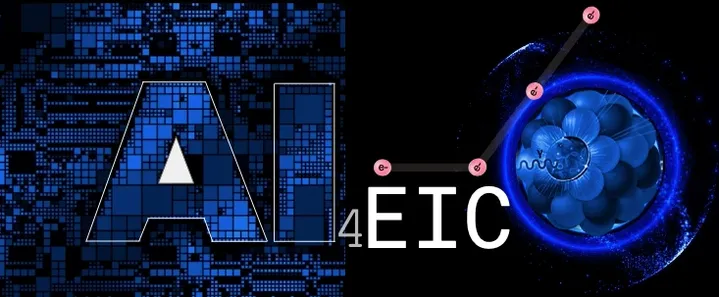Successful realization of EIC scientific program requires designing
and constructing high-performance particle detectors. Recent
developments in the field of scientific computing and increased
availability of high performance computing resources have made it
possible to perform optimization of multi-parameter designs, even when
the latter require longer computational times (for example...
Quasi-real photoproduction measurements at the Electron Ion Collider will require a far backward electron tagger to detect electrons scattered at small angles close to the beam line. A high occupancy is expected in the electron tagger, leading to many possible permutations of hits deposited by the electrons into single electron tracks. To avoid a slow and computationally expensive...
One of the key design choices of any sampling calorimeter is how fine to make the longitudinal and
transverse segmentation. To inform this choice, we study the impact of calorimeter segmentation
on energy reconstruction. To ensure that the trends are due entirely to hardware and not to a sub-
optimal use of segmentation, we deploy deep neural networks to perform the reconstruction....
In Run II of the LHC, a new scheme for the software trigger at LHCb allows splitting the triggering of events in two stages, allowing to perform the detector alignment and calibration in real time. The real-time alignment and calibration procedure is a fully automatic procedure at LHCb that is executed at the begining of each fill of the LHC. The alignment estimates the position of detector...
The GlueX Central Drift Chamber (CDC) in Hall D at Jefferson Lab, used for detecting and tracking charged particles, is calibrated and controlled \textit{during} data taking using a Gaussian process. The system dynamically adjusts the high voltage applied to the anode wires inside the chamber in response to changing environmental and experimental conditions such that the gain is stabilized....
Measurement of jets and their substructure will provide valuable information about the properties of the struck quarks and their radiative properties in Deep-Inelastic Scattering events. The ePIC Barrel Hadronic Calorimeter (BHCal) will be a critical tool for such measurements. By enabling the measurement of the neutral hadronic component of jets, the BHCal will complement the Barrel...
Future improvements in accelerator performance are predicated on increasing capabilities in online control of beams inside accelerators. Machine learning techniques have been the focus of work at SLAC to increase our ability to autonomously optimize and characterize beam dynamics inside accelerator facilities. Bayesian optimization algorithms, which leverage statistical surrogate models of...
Polarization optimization collaboration (BNL, Cornell, JLab, SLAC, RPI)
Beam diagnostic technology is one of the foundations of large particle accelerator facilities. A challenge with operating these systems is the measurement of beam dynamics. Many methods such as beam position monitors have an inherent destructive quality to the beam and produce perturbations after the measurement. The ability to measure the beam conditions with non-destructive edge radiation...
The luminosity of a collider can be affected by many parameters at the same time. It is not easy to distinguish the effects of one parameter from all other parameters separately. Therefore, optimizing the performance of a collider such as RHIC, EIC becomes a multi-objective optimization problem with possible noisy signals and involves many parameters. Therefore, machine learning (Bayesian and...
Modern light sources produce too many signals for a small operations team to monitor in real time. As a result, recovering from faults can require long downtimes, or even worse subtle performance issues may persist undiscovered. Existing automated methods tend to rely on pre-set limits which either miss subtle problems or produce too many false positives. AI methods can solve both problems,...
Standard deep learning models for classification and regression applications are ideal for capturing complex system dynamics.
Unfortunately, their predictions can be arbitrarily inaccurate when the input samples are not similar to the training data. Implementation of distance aware uncertainty estimation can be used to detect these scenarios and provide a level of confidence associated with...
The dynamic aperture (DA) is an important concept in the study of nonlinear beam dynamics. Several analytical models used to describe the evolution of DA as a function of time, and to extrapolate to realistic time scales that would not be reachable otherwise due to computational limitations, have been successfully developed. Even though these models have been quite successful in the past, the...
Reconstructing jets in heavy collisions has always required dealing with the challenges of a high background environment. Traditional techniques, such as the area based method, suffered from poor resolution at low momenta due to the large fluctuating background there. In recent years, the resolution has been improved by using machine learning to estimate the background. While machine learning...
A large-scale physics experiment is distinguished by a wide collaboration and array of research topics, and frequently encounters obstacles in information exchange coordination and data analysis. We introduce an assistant model designed to enhance collaboration and streamline data analysis. This model acts as an intelligent intermediary for research teams, enabling information exchange,...

